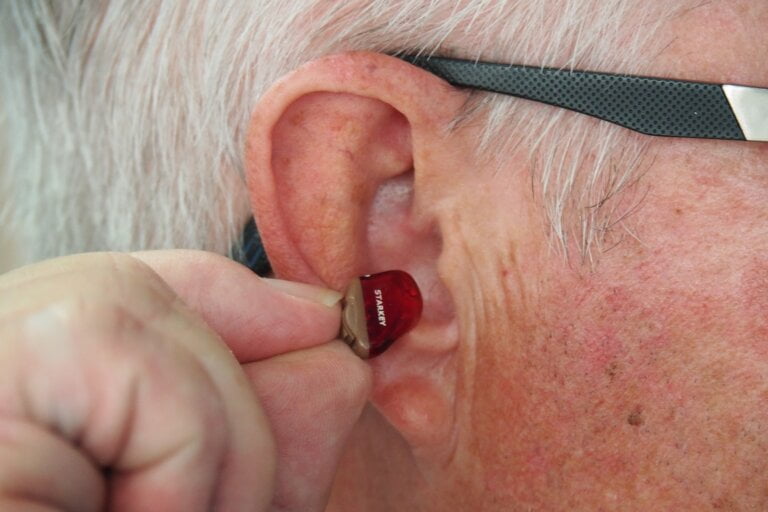Unmasking Otitis Media: Symptoms, Causes, and Treatment
Last Updated on 3rd May 2024 by Admin
Otitis media is a common ear infection that affects both children and adults. It occurs when the middle ear becomes inflamed, usually due to a bacterial or viral infection. This condition can cause various symptoms and discomfort, but with proper understanding and treatment, it can be managed effectively. In this article, we will delve into the symptoms, causes, and treatment options for otitis media.
Symptoms of Otitis Media
Recognizing the symptoms of otitis media is crucial in order to seek timely medical attention. Some common symptoms may include:
- Ear pain: Individuals with otitis media often experience sharp or throbbing pain in the affected ear. This pain can range from mild to severe and may worsen during activities such as lying down or chewing. It is important to note that the pain can sometimes be felt in both ears, not just the affected one.
- Fluid drainage: In some cases, the infection may cause fluid to accumulate in the middle ear. This can result in the drainage of pus or clear fluid from the ear. The fluid may have a foul smell and can sometimes be accompanied by blood.
- Hearing problems: Otitis media can lead to temporary hearing loss or muffled hearing due to the accumulation of fluid in the middle ear. This can affect the ability to understand conversations or hear sounds clearly. It is important to be aware that hearing loss can vary in severity, from mild to more significant.
- Fever: Many individuals with otitis media may develop a low-grade fever, especially if the infection is caused by bacteria. It is essential to monitor body temperature and seek medical attention if the fever persists or worsens.
- Irritability: Infants and young children may display signs of irritability, restlessness, or increased crying when suffering from otitis media. This can be due to the discomfort and pain they experience.
- Loss of appetite: Children with otitis media may experience a decrease in appetite, as the discomfort and pain can make it difficult for them to eat. It is important to encourage fluid intake to prevent dehydration.
It is crucial to note that these symptoms may vary in intensity and duration depending on the individual and the severity of the infection. It is always recommended to consult a healthcare professional for an accurate diagnosis and appropriate treatment.
Causes of Otitis Media
Understanding the underlying causes of otitis media can help in its prevention and treatment. Some common causes include:
- Bacterial or viral infections: Otitis media often occurs as a result of a bacterial or viral infection, such as the common cold or respiratory infections. These infections can cause inflammation and fluid buildup in the middle ear. Streptococcus pneumoniae, Haemophilus influenzae, and Moraxella catarrhalis are common bacteria known to cause ear infections.
- Eustachian tube dysfunction: The Eustachian tube connects the middle ear to the back of the throat. When this tube becomes blocked or fails to function properly, it can lead to the accumulation of fluid in the middle ear, increasing the risk of otitis media. Factors such as allergies, sinus infections, and adenoid enlargement can contribute to Eustachian tube dysfunction.
- Environmental factors: Exposure to secondhand smoke, allergies, and daycare attendance can also increase the likelihood of developing otitis media. Secondhand smoke can irritate the lining of the nose and throat, leading to inflammation and increased susceptibility to infections. Allergies can cause nasal congestion and swelling, which can disrupt the normal function of the Eustachian tube. Daycare attendance can expose children to a higher number of viral infections, increasing the risk of otitis media.
- Anatomy: In some cases, the structure of the ear may contribute to the development of otitis media. For example, children with cleft palate or Down syndrome may have a higher risk of experiencing recurrent ear infections. These anatomical differences can affect the proper functioning of the Eustachian tube and increase the risk of fluid accumulation in the middle ear.
It is important to note that while these factors can increase the risk of developing otitis media, not everyone who is exposed to them will develop an infection. Individual susceptibility and immune response also play a role in the development of the condition.
Treatment Options for Otitis Media
When it comes to treating otitis media, the approach may vary depending on the severity of the infection and the age of the individual. Some common treatment options include:
- Pain management: Over-the-counter pain relievers, such as acetaminophen or ibuprofen, can be used to alleviate ear pain and discomfort. It is important to follow the recommended dosage instructions and consult a healthcare professional if the pain persists or worsens.
- Antibiotics: If the infection is bacterial, your healthcare provider may prescribe antibiotics to help clear the infection. It is important to complete the full course of antibiotics as prescribed, even if symptoms improve. Antibiotics are not effective for viral infections, and their overuse can contribute to antibiotic resistance.
- Ear drops: In some cases, antibiotic ear drops may be recommended to directly target the infection in the ear canal. These drops are typically prescribed for individuals with an outer ear infection (otitis externa) or when the infection is localized to the ear canal.
- Observation: For mild cases of otitis media, especially in older children and adults, observation without immediate treatment may be an option. This approach allows healthcare providers to assess if the infection resolves on its own or requires further intervention. However, it is important to closely monitor symptoms and seek medical attention if they worsen or persist.
- Surgical intervention: In certain situations where otitis media becomes chronic or recurrent, surgical procedures such as tympanostomy tube insertion or adenoidectomy may be considered. Tympanostomy tubes are small tubes inserted into the eardrum to allow for better drainage and ventilation of the middle ear. Adenoidectomy involves the removal of the adenoids, which can contribute to Eustachian tube dysfunction and fluid accumulation.
The choice of treatment depends on various factors, including the age of the individual, the severity of symptoms, the presence of complications, and the likelihood of recurrence. It is important to consult a healthcare professional to determine the most appropriate treatment plan.
Preventive Measures for Otitis Media
Taking preventive measures can significantly reduce the risk of developing otitis media. Here are some strategies to consider:
- Hand hygiene: Frequent handwashing, especially before meals and after being in public spaces, can help prevent the spread of bacteria and viruses that can lead to ear infections. Teaching children proper handwashing techniques is crucial in reducing the risk of infections.
- Avoid exposure to smoke: Reducing exposure to secondhand smoke and maintaining a smoke-free environment can help protect against otitis media. Secondhand smoke irritates the lining of the nose and throat, making individuals more susceptible to infections.
- Vaccinations: Staying up to date with vaccinations, such as the pneumococcal and influenza vaccines, can lower the risk of certain infections that can lead to otitis media. These vaccines help protect against bacteria and viruses commonly associated with ear infections.
- Breastfeeding: Breastfeeding infants for at least six months has been shown to provide immune-boosting benefits, reducing the risk of developing ear infections. Breast milk contains antibodies that help protect against infections and promote overall health.
- Avoiding bottle propping: When feeding infants, it is important to avoid propping the bottle as it can lead to an increased risk of ear infections. Propping the bottle can cause the milk or formula to flow into the Eustachian tube, increasing the risk of fluid accumulation and infection.
By practicing these preventive measures, individuals can reduce their risk of developing otitis media and enjoy better ear health. It is important to remember that these measures are not foolproof, and it is still possible to develop an ear infection even with precautions in place. Regular check-ups with a healthcare professional and prompt medical attention when symptoms arise are essential for early detection and appropriate management of otitis media.
Frequently Asked Questions
Q1: What are the common symptoms of otitis media?
A1: Common symptoms of otitis media include ear pain, fluid drainage from the ear, hearing problems, fever, irritability, and loss of appetite.
Q2: What are the main causes of otitis media?
A2: Otitis media is often caused by bacterial or viral infections, Eustachian tube dysfunction, environmental factors (such as secondhand smoke exposure and allergies), and anatomical differences in the ear.
Q3: What are the treatment options for otitis media?
A3: Treatment options for otitis media include pain management with over-the-counter pain relievers, antibiotics for bacterial infections, ear drops for localized infections, observation for mild cases, and surgical intervention in chronic or recurrent cases.
Q4: How can otitis media be prevented?
A4: Preventive measures for otitis media include practicing good hand hygiene, avoiding exposure to smoke, staying up to date with vaccinations, breastfeeding infants for at least six months, and avoiding bottle propping during feeding.







